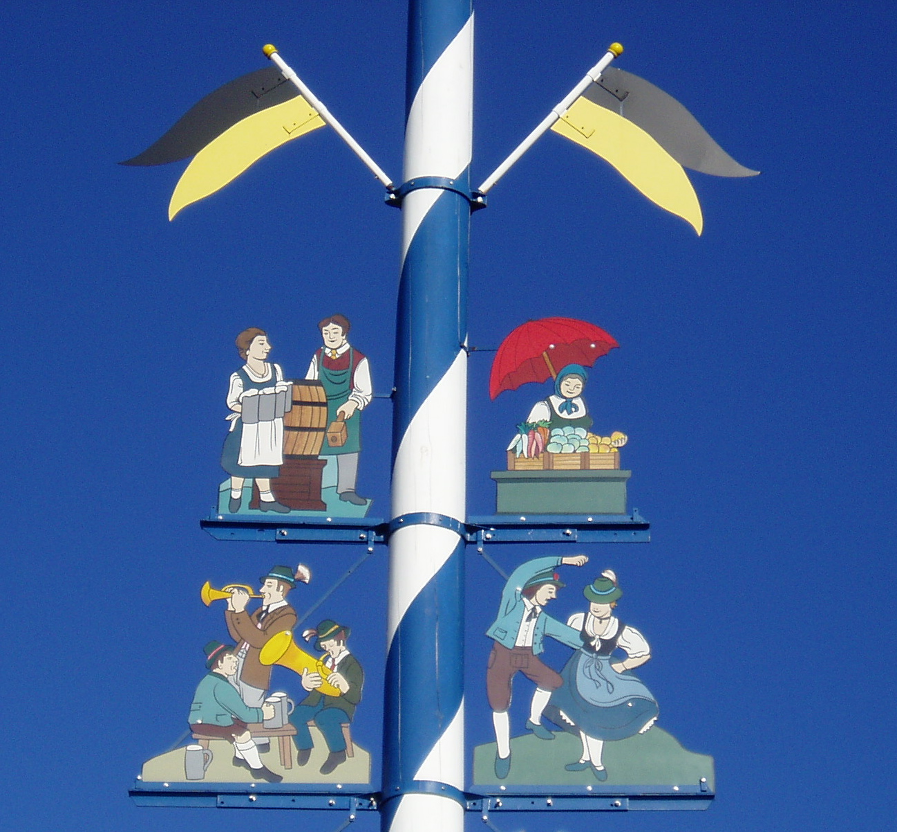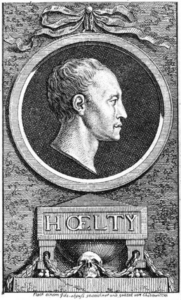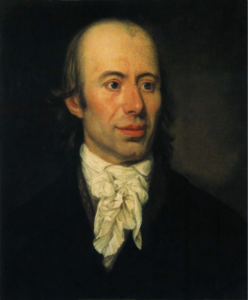Welcome, dear beautiful May
(Poet's title: Willkommen, lieber schöner Mai)
Set by Schubert:
D 244
canon in two parts for 3 voices[August 1815]
Willkommen, lieber schöner Mai,
Der unsre Flur verjüngt,
Dass ringsum Laub und Blumen neu
Aus vollen Knospen dringt.
Dir tönt der Vögel Lobgesang;
Der ganze Buchenhain
Am Blumental ist Silberklang,
Und Bäche murmeln drein.
Rot stehn die Blumen, weiß und blau,
Und Mädchen pflücken sie,
Und tanzen auf der grünen Au:
Ahi, Herr Mai, ahi!
Ihr Busen ist von Blümchen bunt;
Von schöner Melodie
Ertönt, und lacht ihr Rosenmund:
Ahi, Herr Mai, Ahi!
Welcome, dear beautiful May,
Which rejuvenates our fields,
Causing leaves and new flowers
To burst out of full buds.
The bird’s song of praise is raised to you;
The whole beech grove
By the valley of flowers is a silvery sound,
And brooks are joining in with their babbling.
The flowers are standing – red, white and blue –
And girls are picking them,
And dancing on the green meadow:
Ahi, Mr. May, Ahi!
Her breast is colourful, with little flowers,
A beautiful melody
Is resounding and her pink mouth is laughing:
Ahi, Mr. May, Ahi!
All translations into English that appear on this website, unless otherwise stated, are by Malcolm Wren. You are free to use them on condition that you acknowledge Malcolm Wren as the translator and schubertsong.uk as the source. Unless otherwise stated, the comments and essays that appear after the texts and translations are by Malcolm Wren and are © Copyright.
☙
Themes and images in this text:
Beech trees Birds Blue Chest / breast Dancing Fields and meadows Flowers Green Leaves and foliage May Melody Mouths Red and purple Rivers (Bach) Roses and pink Silver Valleys White Woods – groves and clumps of trees (Hain)
In the Germanic tradition May Day is the first day of summer. After the evil spirits had been given their final fling on Walpurgisnacht (April 30th), it was traditional to ‘dance into May’. Hölty’s song is a direct address to the coming May and encourages the crowd to join the dance. Music is provided by the birds, with babbling brooks offering the accompaniment. Although later generations would connect the tricolour with revolution (with May Day becoming International Workers’ Day), the red, white and blue flowers here are almost certainly intended to remind the listener of the colours of the Maypole (and associated Freudian connections: erect red flowers being plucked by girls with pink mouths etc.).

☙
Original Spelling Maylied Willkommen, lieber schöner May, Der unsre Flur verjüngt, Daß ringsum Laub und Blumen neu Aus vollen Knospen dringt. Dir tönt der Vögel Lobgesang; Der ganze Buchenhain Am Blumenthal ist Silberklang, Und Bäche murmeln drein. Roth stehn die Blumen, weiß und blau, Und Mädchen pflücken sie, Und tanzen auf der grünen Au: Ahy, Herr May, ahy! Ihr Busen ist von Blümchen bunt; Von schöner Melodie Ertönt, und lacht ihr Rosenmund: Ahy, Herr May, Ahy!
Confirmed by Peter Rastl with Schubert’s source, Gedichte von L. H. Ch. Hölty. Neu besorgt und vermehrt von Johann Heinrich Voß. Wien, 1815. Bey Chr. Kaulfuß und C. Armbruster. Gedruckt bey Anton Strauß. Meisterwerke deutscher Dichter und Prosaisten. Drittes Bändchen. page 150; with Gedichte von Ludewig Heinrich Christoph Hölty. Besorgt durch seine Freunde Friederich Leopold Grafen zu Stolberg und Johann Heinrich Voß. Hamburg, bei Carl Ernst Bohn. 1783, page 156; and with Musen-Almanach oder poetische Blumenlese für das Jahr 1781. Herausgegeben von Voß und Goekingk. Hamburg, bey Carl Ernst Bohn, page 198.
Note: This is the version published by Voß. The initial version of this poem is different.
To see an early edition of the text, go to page 150 [228 von 300] here: http://digital.onb.ac.at/OnbViewer/viewer.faces?doc=ABO_%2BZ15769170X



